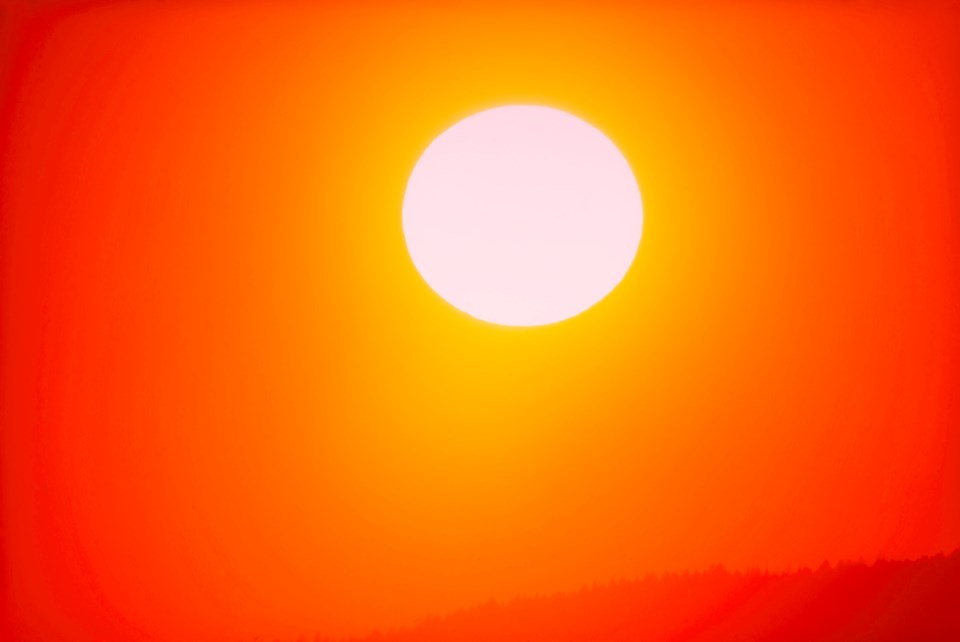Hot and dry weather is on the way for much of British Columbia and officials are warning people to prepare now.
On Wednesday, the Public Safety Ministry issued a statement saying a hot spell is headed for B.C. in the coming days.
"We should all prepare ahead of time for it,” says Environment Canada meteorologist Bobby Sekhon during an interview with Glacier Media.
Metrologists are getting ready for the heat wave, predicting high temperatures. But they won't be as severe as last year.
In 2021, more than 600 British Columbians died during an extreme heat wave in the summer; at the time, there was no alerting system. This year, the province announced a new heat alert system for emergencies.
“When we see temperatures like what we are seeing next week, that’s when it starts to get a little concerning,” says Sekhon. "Next week is really when we want to keep in mind our heat safety.”
The new BC Heart Alert and Response System (HARS) will issue a warning through a two-tier system. First, it will start with a heat warning that will indicate temperatures are rising and are expected to exceed the pre-set thresholds. If those thresholds are met and are expected to increase over a three-day period, a broadcast alert will be sent out.
The regional temperature thresholds are:
- Lower Mainland, Vancouver Island: daytime high of 29 C, nighttime low of 16 C
- Fraser Valley: daytime high of 33 C, nighttime low of 17 C
- Southeast (including the southern Okanagan): daytime high of 35 C, nighttime low of 18 C
- Northeast: daytime high of 29 C, nighttime low of 14 C
- Northwest: daytime high of 28 C, nighttime low of 13
Sekhon adds this hot spell is not expected to be as intense as 2021.
"We are unlikely to see temperatures like what we saw last year, so we are probably not looking at those all-time records being set, but any time we are talking about heat warnings that's when we can start to see a significant increase in heat-related illness,” he says.
Hot spots across the province are mostly the usual warm locations with some expected to reach into the high 30s and possibly break 40 C.
"We are going to be looking at the southwest interior: places like Kamloops, South Okanagan, Osoyoos and stuff those will probably be getting pretty hot,” he says. "Even in places like Terrace, B.C., it is up on the northwest coast there but the heat warning criteria is lower.”
Sekhon adds people living in Terrace will find the hot spell particularly warm.
"Terrace is something that is sticking out to us. It’s not a particularly hot place but they’ll be getting up to the upper 20s, maybe even low 30s next week.”
Locations around the water and ocean will be cooler.
“As soon as you go a little bit inland that’s where you’re really going to feel the heat again,” he says.
Nanaimo and Port Alberni are both expected to heat up while sections of Howe Sound and the Fraser Valley are expected to see “some pretty hot” temperatures.
How to prepare for a heat wave
People are being advised to start preparing now by having a plan in place to cool off and start getting into the routine of drinking water regularly.
“Start to have that conversation, especially with seniors that might be living alone, friends, neighbours, grandparents, and make sure everyone has a plan if we do get into a heat warning situation — which is quite possible — that they have a way to stay cool, stay hydrated.”
Temperatures could start rising as early as Sunday and will ramp up on Tuesday.
The ministry is not currently anticipating an extreme heat emergency but says people are encouraged to monitor Environment and Climate Change Canada for temperature forecasts in their region.
For ways to stay cool, visit the PreparedBC website. For cooling centres near you, visit the EmergencyInfoBC website.




